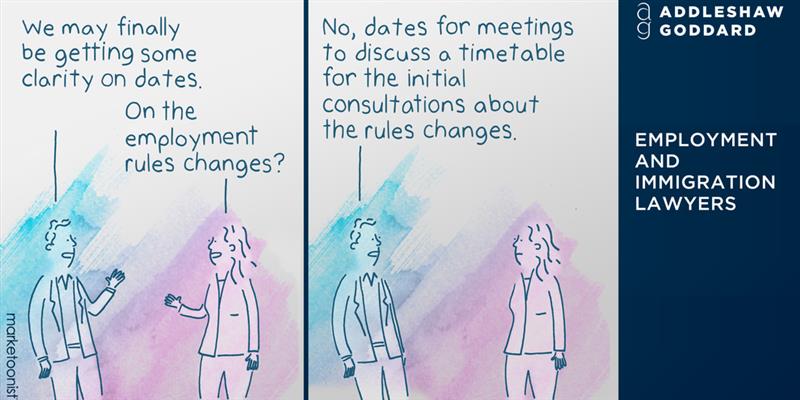In recent years, equal pay has become a cornerstone of discussions surrounding diversity and inclusion (D&I) in the workplace. The principle of equal pay for equal work is enshrined in both international and domestic legal frameworks, yet the journey to achieving pay equality remains fraught with challenges. For multinational organisations, the complexity is amplified by the need to harmonise policies across jurisdictions with differing legal, cultural, and social norms. Following International Equal Pay Day on 18 September 2025, it is an opportune moment to reflect on the progress made, the challenges that remain, and the small but significant steps that are driving change.
The role of data
A critical element in addressing pay equality is the collection and analysis of data. Organisations need accurate, comprehensive data to identify pay gaps and implement effective interventions. However, this process often involves collecting sensitive personal information, such as gender, ethnicity, and other protected characteristics. Understandably, employees may feel apprehensive about sharing such data, particularly if they are unsure how it will be used or whether it will remain confidential.
Building trust is essential in overcoming these concerns. Clear communication about the purpose of data collection, how the information will be used, and the measures in place to protect confidentiality can help alleviate employees' fears. Organisations should also ensure that their data collection practices comply with data protection laws, such as the UK General Data Protection Regulation, to safeguard individuals' privacy and build confidence in the process.
In the UK, the forthcoming draft Equality (Race and Disability) Bill may introduce disability and ethnicity pay gap reporting. These measures aim to enhance accountability and foster fairer workplace practices across wider diverse groups beyond just gender. Both are valuable and necessary initiatives but present certain complexities.
- A significant challenge in achieving pay equality across multinational organisations is the differing categorisation of sensitive information, such as disability and ethnicity, which complicates data collection and analysis. Different jurisdictions categorise ethnicity in varying ways, with some using broad classifications and others more granular distinctions, while legal or cultural restrictions in certain regions may limit data collection altogether. This lack of uniformity hinders consistent reporting and creates obstacles to identifying disparities and implementing effective interventions.
- Employers must carefully address barriers that discourage employees from disclosing their ethnicity and ensure clear guidance on self-identification, as reporting relies entirely on employee-provided data. Low participation rates or inconsistent categorisations across regions could undermine the usefulness of ethnicity pay gap reports, making the exercise burdensome and less effective. Organisations must also balance the need for meaningful data with compliance with local laws, cultural sensitivities, and robust data protection measures.
- In addition, the challenge for disability pay gap reporting lies in the complexity of the definition of disability, which can be difficult for both employers and employees to interpret, again particularly in a system that relies heavily on self-reporting. Disability is not a straightforward concept - employees may be hesitant to disclose a disability due to concerns about how the information might be used by their employer, potentially leading to underreporting. To address these issues, employees must be assured that their data will be used solely for its intended purpose and handled securely.
- Conversely, some employees may report having a disability when their condition does not meet the legal definition under the Equality Act 2010, further complicating the accuracy of the data. The legal definition of disability is nuanced and often differs from its everyday usage, which could result in inconsistent reporting and limit the reliability of the data.
Despite these complexities, both disability and ethnicity pay gap reporting represent critical steps toward greater workplace equality. With careful implementation and transparency, these measures can drive meaningful change and promote more inclusive organisational practices.
Analysis of data
When analysing pay gap data, it is important to consider the impact of pool sizes, particularly in organisations that are not highly diverse. If the pool of employees within a specific characteristic—such as disabled employees—is small, the data can become skewed. For example, including all roles in pay gap reporting for disabled employees could result in volatile outcomes, where averages or medians are disproportionately influenced by one or two individuals. This can create a misleading narrative and make it difficult to draw meaningful conclusions, highlighting the need for careful interpretation of such data.
Similarly, organisations must ensure they have sufficient data to analyse disparities within broad job titles. For instance, a job title like "Manager" may encompass employees at varying levels of seniority, experience, or pay. Without detailed analysis, this could mask underlying factors contributing to perceived gaps. For example, if you have several ethnically diverse employees being promoted to the “Manager” role then they may be starting at the entry-level pay for that role. This may in turn skew the results and incorrectly suggest pay disparities compared to their white counterparts who are perhaps more experienced Managers. This demonstrates the importance of drilling down into the data to understand the context behind any gaps, ensuring accurate and fair representation of pay equality.
The complexity of multinational harmonisation
For multinational organisations, achieving pay equality is far from straightforward. While the goal of harmonising pay structures across global operations is admirable, it is complicated by the differing legal definitions and categorisations of equal pay in various jurisdictions. For example, in the UK, the Equality Act 2010 mandates equal pay for men and women performing equal work, defined as work that is the same, broadly similar, or of equal value. In contrast, other countries may have narrower or broader interpretations of what constitutes equal work, and the associated compliance obligations can vary significantly.
This complexity is further compounded by cultural differences. In some regions, discussions about pay are considered taboo, making transparency initiatives challenging to implement. In others, there may be resistance to the concept of pay equality itself, influenced by historical or societal norms. For multinational organisations, navigating these differences while maintaining a consistent global approach to equal pay requires careful planning, robust legal advice, and a commitment to fostering an inclusive workplace culture.
Progress through small steps
International Equal Pay Day underscores the global effort to achieve pay equality. While the process is complex, progress can be made through deliberate actions such as regular pay audits, unconscious bias training, and fostering inclusive leadership. Transparency is essential for building trust and addressing disparities effectively. Despite challenges like harmonising pay practices across jurisdictions and managing sensitive data, collaboration and continuous improvement enable meaningful progress.






